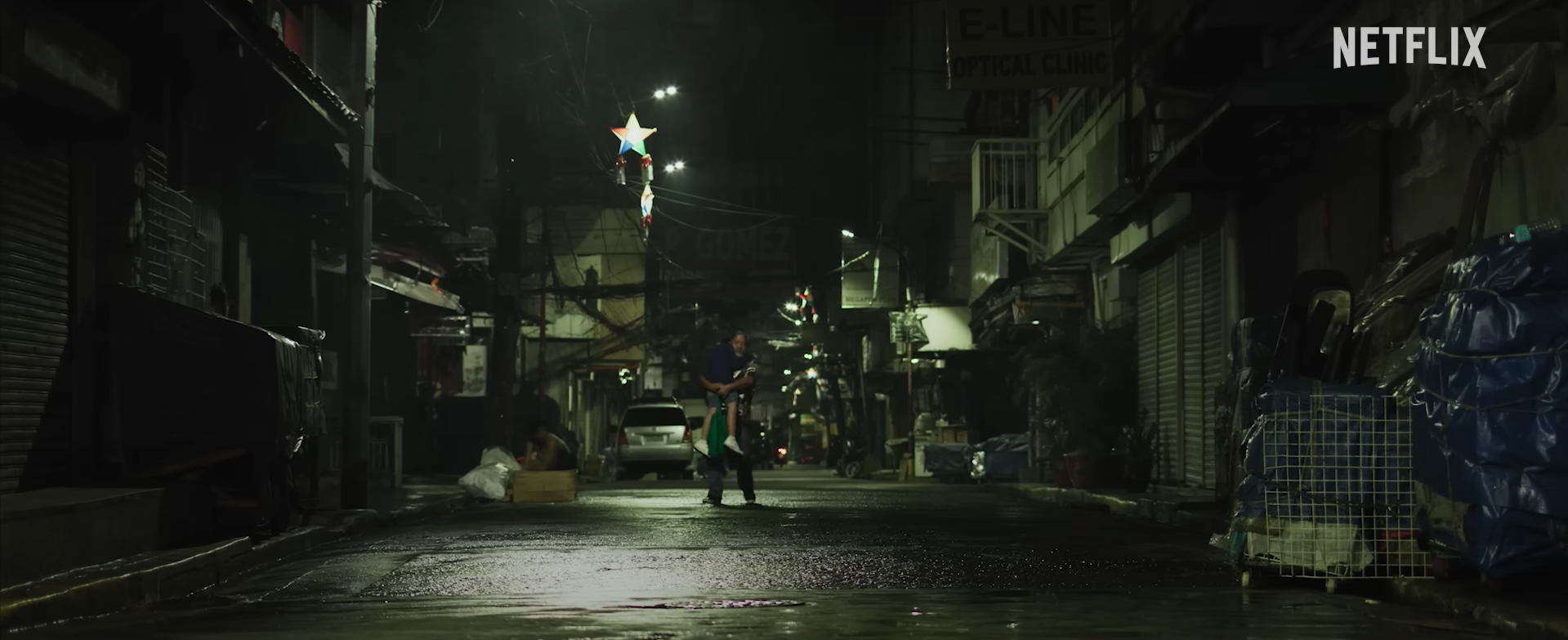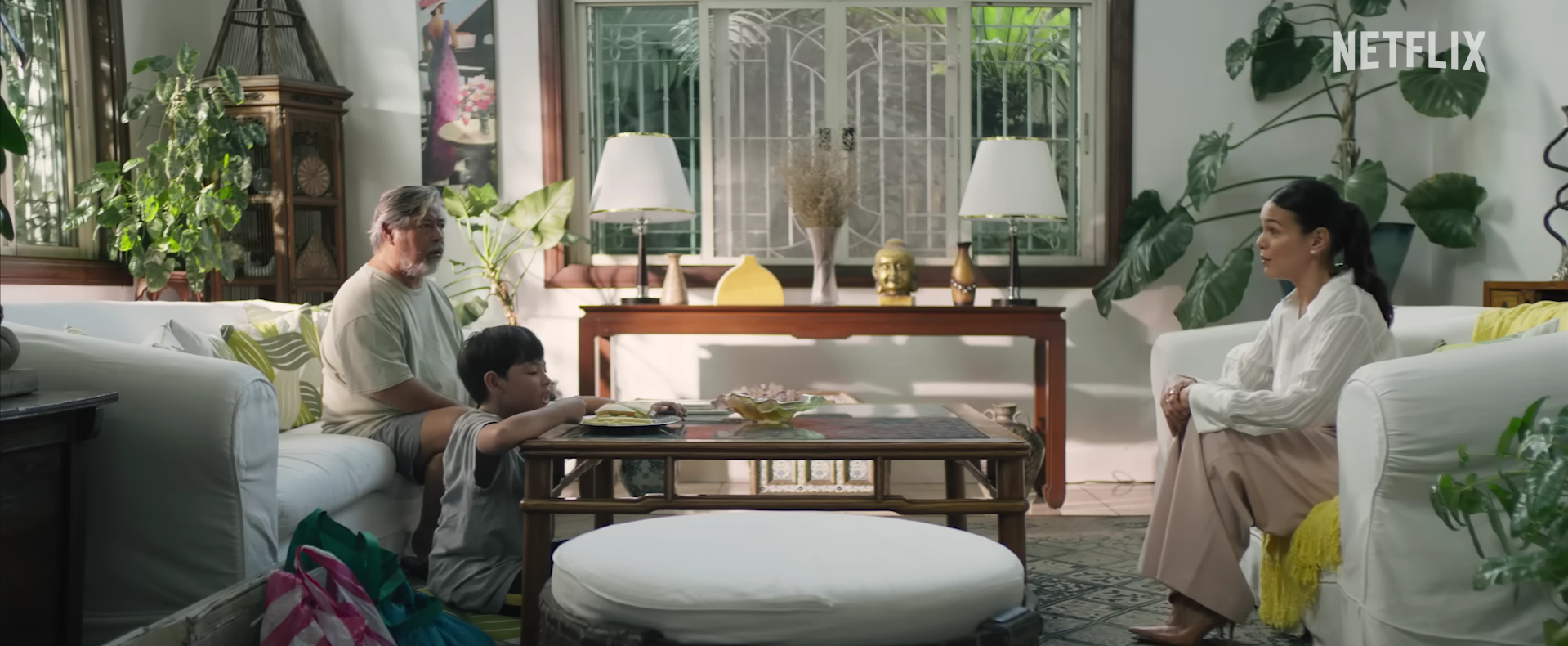MOST FILMS that represent Filipinos at the margin follow a similar theme: portraying the poor as people with good conscience to counterbalance their distorted sense of morality. Lolo and the Kid, which uses the streets as the stage for the dramatic and wayward lives of its characters, distinguishes itself from that formula.
Showcasing a life where desperation shapes moral choices to the point of exploiting others’ compassion, Benedict Mique’s Lolo and the Kid depicts characters who try to escape a life of poverty. The film’s profound intentions, however, are ultimately overpowered by a misaligned perspective.
Premiering last Aug. 7, 2024 on Netflix, Lolo and the Kid has since made a buzz online, immediately climbing to the top spot of the streaming platforms’ most popular Filipino movies. The film explores the story of two people connected by austere economic difficulties, which later lead them to unethical choices to survive.
Lolo (Joel Torre) and Kid (Euwenn Mikael Aleta) meet at their lowest as abandoned individuals on the streets. Both transformed themselves as con artists to cope with the hardships of life.

The two are first seen outside a gated community posing as homeless grandfather and grandson. They wear torn clothes and situate themselves beside a makeshift shelter from cardboard boxes.
Numerous wealthy characters are shown falling for the duo’s compelling act. Some of them even let Lolo and Kid stay the night, unknowingly granting both the opportunity to rummage their houses for valuable items to sell to their trusted buyer of stolen goods.
The movie slowly untangles the lives of the two through the years of being together. Through their deceptive schemes, they form a bond that transcends blood and flesh.
As the film reaches its peak, Lolo faces a moral dilemma. Lolo’s compelling monologue sheds light on his vulnerability. His seeping conscience urges him to separate Kid from a life of thievery and deception—a life without him.

The complexity of the characters showcased how socioeconomic pressures can lead individuals down unexpected paths. However, the reversed depiction of wealthy people as the “good ones” in the story felt misaligned with reality. The film failed to discuss that people in poverty are victims of society’s inequalities.
A device present in the film was the repetitive use of the song Through the Years by Kenny Rogers. The song symbolizes the inescapable nature of Lolo’s life and shows his awareness of his unchangeable past, hence, his sternness to stand by his decision to live a life without Kid.
Despite its characters’ nuances, the film’s pacing prevented them from being explored thoroughly. The sudden time skip, from Kid being Lolo’s accomplice to a normal child, felt out of place and rushed. While it was a significant transition, the skip was abrupt and lacked harmony with the preceding parts of the film.
Some scenarios also seemed too shallow to be genuine experiences, showcasing the film’s dissonance with reality. For example, the gullible rich people who took Lolo and Kid under their wing did not consider running a background check on the two. This scene may be intended to reinforce one of the story’s nature, which is to display the rich’s naivety and supposed compassion.
The film often used a bird’s eye view to show the entirety of Metro Manila. It also showed the contrast between the lives of Lolo, Kid and their victims. Lolo and Kid were uncertain about their standing in society, not knowing if they were better off or worse compared to others living on the streets. As partners, they were mostly in the same frame.

The stillness of the shots throughout the film mirrored the stagnant life the two were living—a life of deceptions and fleeting happiness.
The script, however, proved to be a setback for the movie because of its awkward nature once performed by the actors. What might seem natural on paper may be out of place in real life. The film’s objective to offer a heartfelt narrative felt forced. For instance, Lolo’s excessive philosophical musings to Kid throughout the film were overly contrived and detached from the natural flow of a usual Filipino conversation.
Torre’s performance was both humorous and heartfelt. His banter of lines with Aleta, who won Movie Child Performer of the Year for his performance in Firefly (2023), boosted their chemistry on-screen. Despite the time skip, Kid’s chemistry with Lolo was still present through Juan Karlos Labajo’s commendable performance as the adult Kid.
The background music during certain scenes lacked the depth to complement the actor’s performance in pivotal scenes. For instance, in the adult Kid and Lolo reunion scene, Labajo’s acting dominated the scene. The music failed to complement Labajo’s powerful crying, making it awkward and uncomfortable over time.
The separation of Lolo and Kid underscored the film’s exploration of redemption by pursuing new beginnings despite the constraints of a harsh reality. Poverty was explored in Lolo and the Kid as a relentless cycle the characters tried desperately to escape from, yet this was also what bound them together.
The film perfectly represented the uncomfortable journey of ending long cycles to lead the path toward a better and moral life. However, its pacing and poor narrative execution undermined its potential to be an actual heartfelt film. F – Hjadoeya Calica



